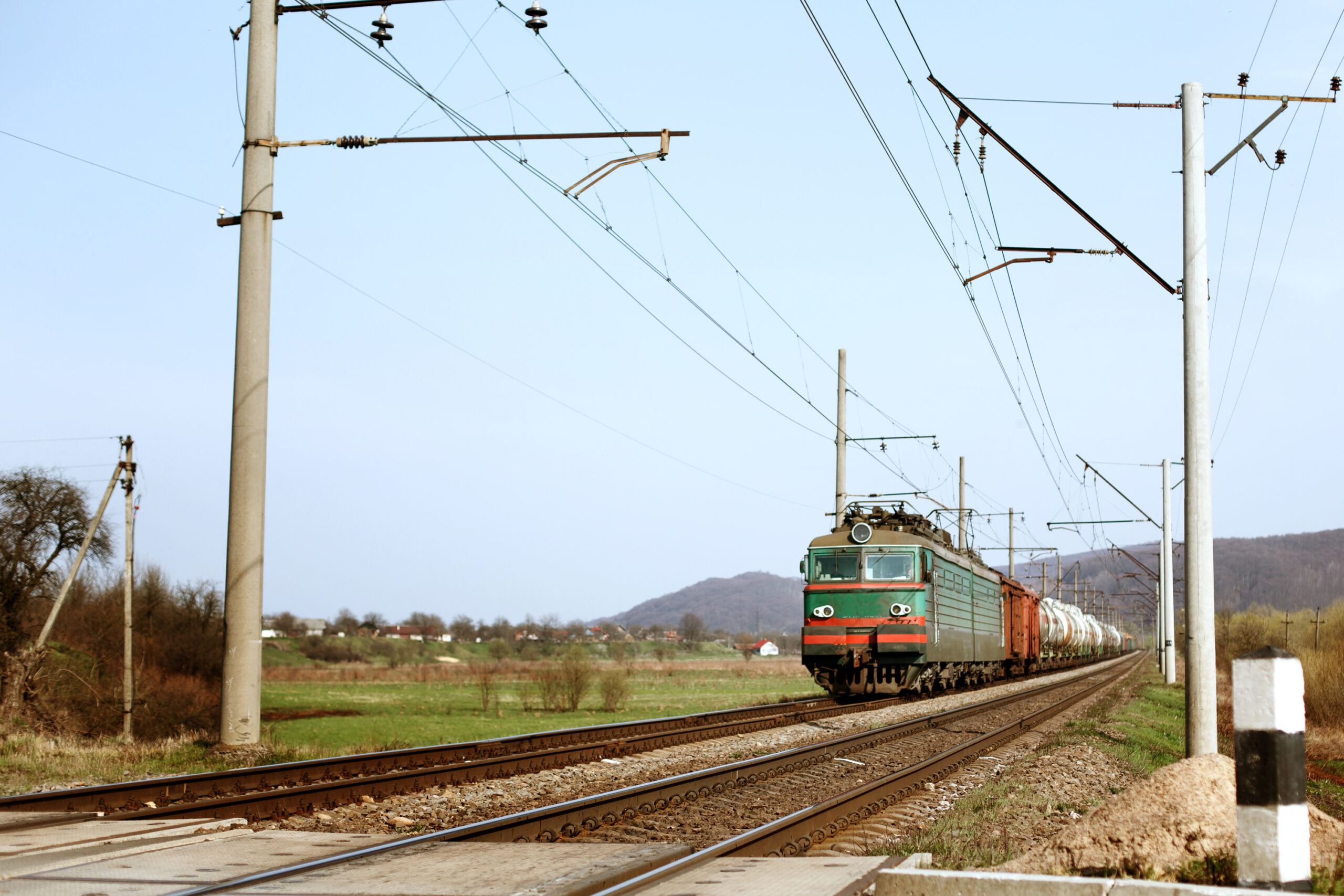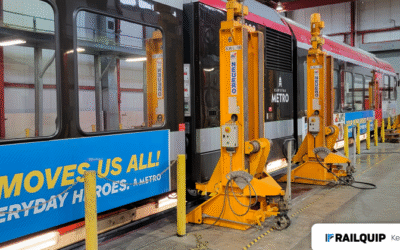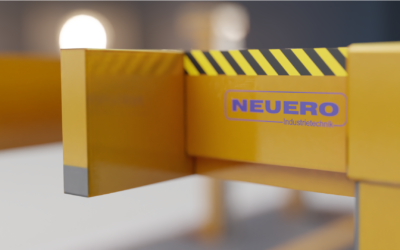When carrying out on-site rail activities, accidents may happen. Despite their paucity of scantiness in the railcar transportation industry, some may result in fatal injuries as they are prone to occur from time to time.
Safety of operations is a priority for companies practicing Responsible Care. To reduce the risks attendant with on-site rail activities across the Railroad and Automotive Industry and share the best solutions, Railquip has elaborated this safety guideline.
Table of contents
Why you should be responsible for providing safe railcar transportation to your employees as a train mover?
Working on transportation sites is inevitable due to strict safety guidelines. Working with or nearby cars on locomotive sites has explicit risks that should be prudently and precisely addressed.

Do your employees operate mobile railcar movers or locomotives within your company? If so, you have to train them on operating that equipment and how to follow all manufacturer recommendations for safe equipment operations.
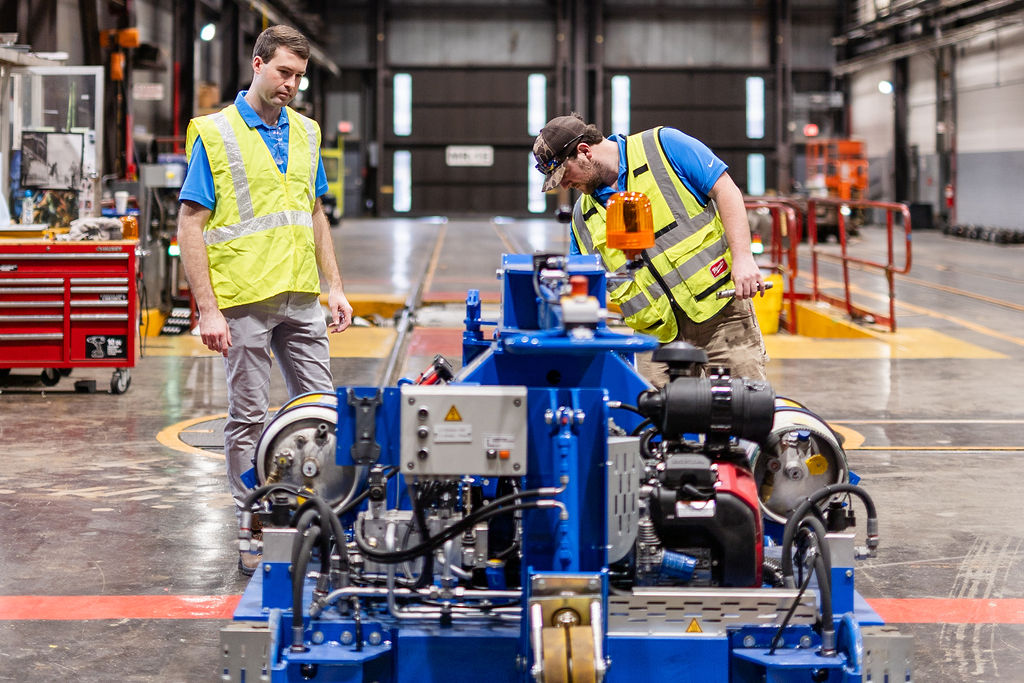
The Occupational Safety and Health Act’s (OSHA’s) duty clause necessitates that each employee is in a working environment free from recognized perils liable to cause serious harm or death.
Pragmatic risky circumstances happening during in-plant locomotive or railcar mover activities necessitate counteractive action by you, the employer, hence abolishing further employee exposure.
- Pragmatic risky circumstances happening during in-plant locomotive or railcar mover activities necessitate counteractive action by you, the employer, hence abolishing further employee exposure.
- Mount effective remote sensors on the locomotive or mover and install them to shut down the moving system if an obstruction occurs on or along the tracks.
- Prohibit the operation of locomotives in occupied areas.
Use a safety observer in addition to the operator. In-plant switching operations and services usually use a conductor or safety observer to provide an extra eyes-on safety measure. However, this technique requires the conductor to be well-trained on the proper safety necessities involved with connection, switching, and operation of rail equipment.
Conductors and engineers are accountable for the safe movement of railcars and locomotives. They are held accountable and are responsible for other crew members and their responsibilities. This is because they organize the duties or switching activities along the railroad route.
You might be interest in: What You Need to Know Before Moving Your Own Railcar
Who should undergo training?
Every employee who operates a locomotive or a mobile train mover performs the operations of coupling and uncoupling between railcars or acts as a conductor directing a mobile railcar mover or locomotive operations ought to be well trained in accurate rail safety measures.
Each railroad and automotive company should develop and uphold a General Rail Operating Procedure. This should outline the guidelines for how each heavy rail equipment must be operated within the fence line.
At the least, it should state the necessities for communications, speed limit restrictions, when and what number of toolbox meetings should be held, road and walkway crossings, and training.
Additionally, the procedure should encompass how an employee will enter the ‘red zone’ when coupling or uncoupling air hoses and railcars. Train engineers must be properly trained on equipment operation and maintenance.
Safety practices for locomotives and other moving equipment

The precise roles and responsibilities for explicit tasks can differ according to the site, rail service suppliers, including autonomous third-party contractors, and the persons performing the job.
Sovereign third-party contractors must comprehend the means, techniques, and details of the work performed, the safety procedures, as well as the equipment.
Railcar movers and locomotives must have a reliable safeguarding system, for example, speed limiters, dead man’s button, and men down system. This system should be regularly tested in compliance with legal and company requirements.
- Safety procedures should be outlined to prevent unsolicited railcar movements securely.
- Local traffic regulations must be exercised, including level crossing and maximum speed.
- Railcar movers must be well-fitted with appropriate lighting. Additionally, if a rotating beacon is present, it ought to be turned on when moving.
- Railcar movers must ensure that the cars and locomotives have the air braking system properly connected and fully charged before they are moved.
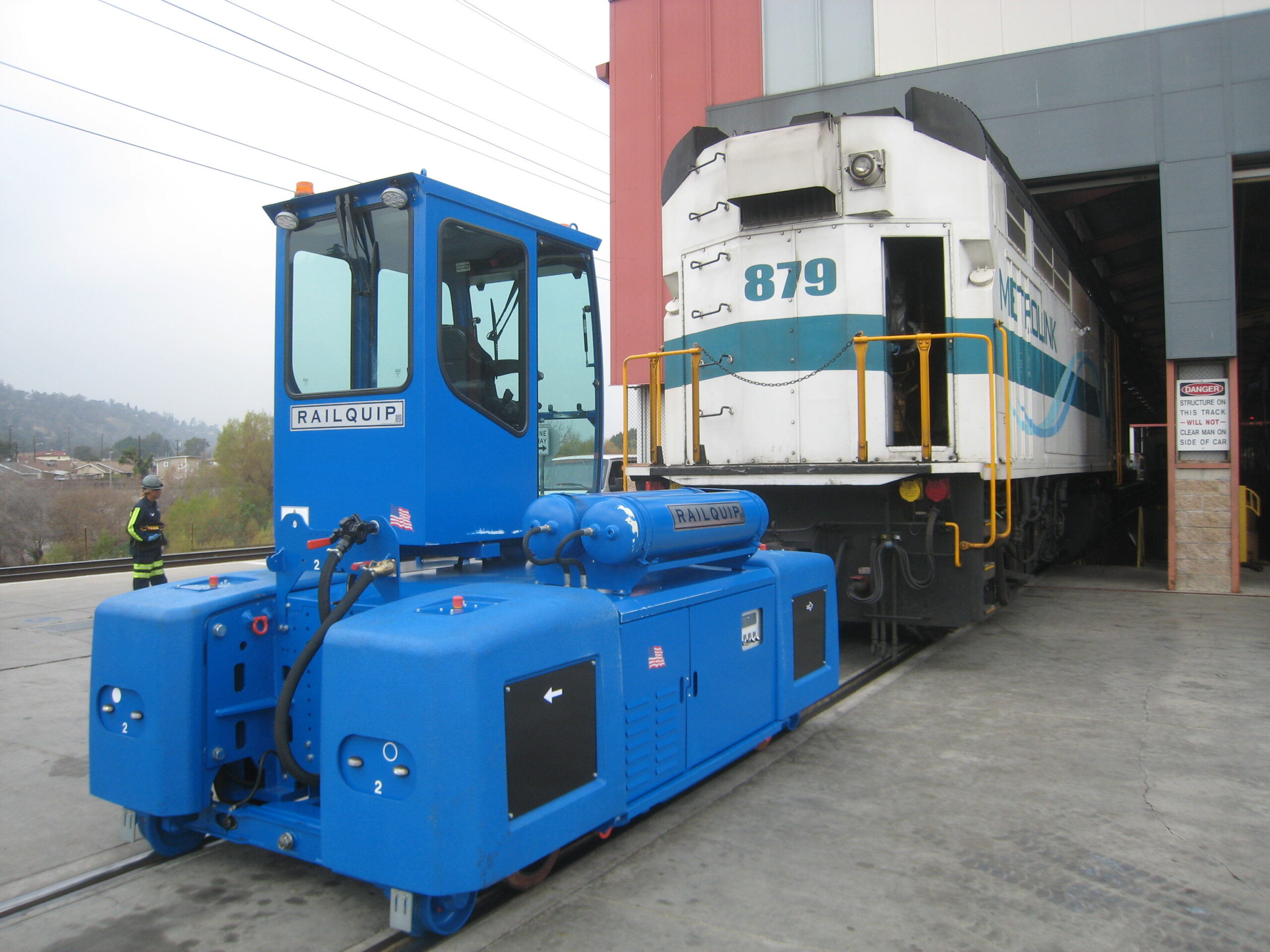
Railcar movers
At Railquip, we provide a complete line of railcar movers designed to satisfy your locomotive needs in and around your track-mobile facility.
Available in track-mobile models are driven in gasoline, forklifts, and our most prevalent battery-powered models with load capabilities up to 1000 tons, we sell and service one that will provide solutions for your needs. Kindly review our inventory and consult our experts about a free demonstration today.
- Battery-powered railcar movers – Our battery-powered railcar mover series provides emission-free operation in workshops thanks to the electric drive. Additionally, it offers patented rail guidance equipment that facilitates easy on-and-off tracking. Its standard features include extreme maneuverability, quiet operation, a ‘green’ design concept, and remote-controlled operation.
- Forklift truck propelled railcar mover–This is an economical means to switch cars with superior component reliability. The portable railcar mover is designed for a normal track gauge with a 1.5–3.1mph maximum shunting speed. It comprises these standard features: mobile, quickly set to begin operation forklift railcar mover–660-ton capacity, and AAR contoured coupler firmly grips car.
- Maxi railcar mover LPG/gas – offering cost-effective operation, multi-directional capabilities, and maneuverability, the maxi railcar mover, is previously unknown in the railroad maintenance shop. The cost of purchase and maintenance of large vehicle shunting equipment is virtually eliminated. Also, it is ruggedly designed to offer years of low-cost shunting service in your equipment maintenance area and is ready to handle the most severe rail conditions.
Our track-mobile industry features railroad equipment provided by rebuilders, liquidation companies, dealers, and private owners.
Some of the top rebuilders and dealers with extensive proficiency and high-performance standards sell and purchase equipment on our track-mobile page.
For more insights, we recommend reading: Selecting the Perfect Railcar Mover for your Railroad Operations
Contact our railcar mover specialists
In production for more than three decades, Railquip provides excellent customer service. We provide solutions to customers that rely on track-mobile railcar movers daily to meet their material handling needs.
Innovation is propelled by consumers of our products and services who demand a safe, reliable, and efficient railcar mover. We pride ourselves in what we do and are here to help your operation run more smoothly.
See a little bit more of our E-Max railcar mover:
Whether you need a quote, more information, a free demonstration, have a general question or are simply unable to identify the best point of contact, visit our online page today, check out our inventory, and contact our experts.
They will work diligently to provide you with the parts and component support necessary to keep your machine up and to run smoothly. Specializing in all things Railquip, our elite team can support Trackmobile and Rail King brands altogether.
We are a phone call away and will ensure that whatever railcar moving service you need is handled professionally and seamlessly. Welcome!
Frequently Asked Questions
1. Beyond initial training, what ongoing measures should employers take to ensure continuous employee safety in railcar transportation?
Continuous safety in railcar transportation requires more than just initial training. Employers should implement regular refresher courses, conduct periodic drills for emergency scenarios, provide updates on new equipment or procedures, and maintain an open channel for feedback and incident reporting.
While Railquip provides cutting-edge Railcar Movers with built-in safety features, we also emphasize the importance of continuous training and proper maintenance protocols to maximize the safe operation and longevity of our equipment.
2. What are the key elements that a “General Rail Operating Procedure” should include for in-plant rail activities?
A robust General Rail Operating Procedure should outline clear guidelines for all heavy rail equipment operations within a facility. Essential elements include detailed requirements for communications (e.g., radio protocols), strict speed limit restrictions, mandates for regular toolbox meetings, procedures for road and walkway crossings, and comprehensive training protocols.
Railquip’s Railcar Movers are built to integrate into disciplined operating procedures.
3. What specific safeguarding systems should modern railcar movers and locomotives be equipped with to enhance operational safety?
Modern railcar movers and locomotives should feature reliable safeguarding systems to prevent accidents. These include speed limiters to prevent excessive speeds, a “dead man’s button” or similar operator presence detection system, and “men down” systems to detect incapacitation. Additionally, remote sensors that can shut down the system upon detecting an obstruction, proper lighting, rotating beacons, and fully functional air braking systems are crucial.
Railquip’s line of Railcar Movers is designed with advanced safeguarding systems, including remote-controlled operation and robust braking capabilities, to ensure maximum safety during all railcar movements.
